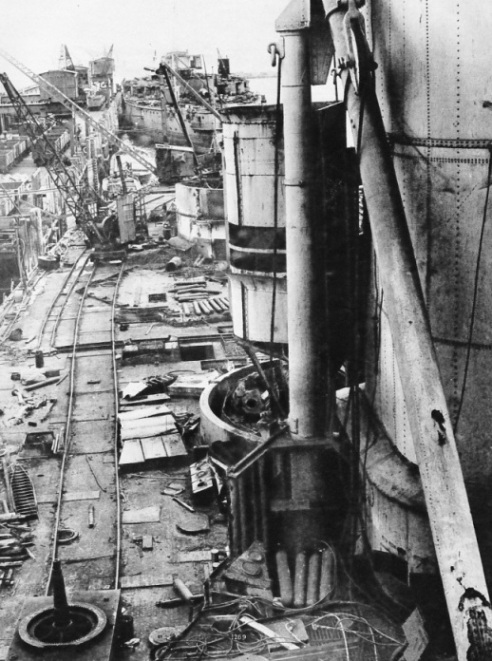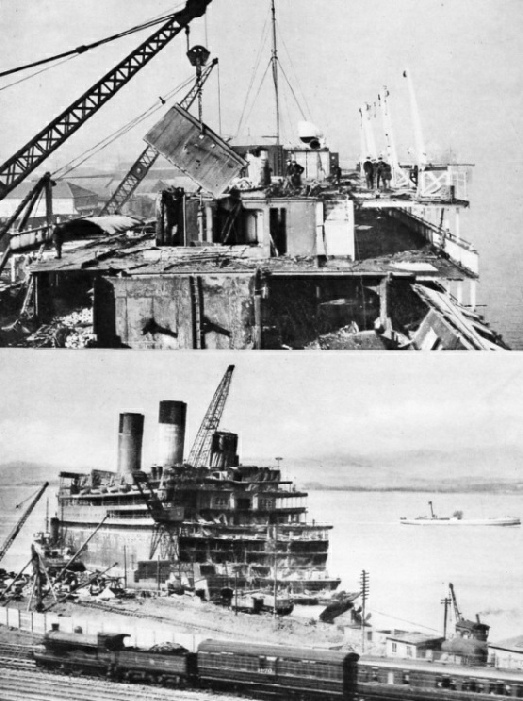
© Shipping Wonders of the World 2012-



Part 40
Part 38 of Shipping Wonders of the World was published on Tuesday 10th November 1936.
It included a centre photogravure supplement featuring the shipbreaking industry, which formed part of an article with the same title.
The Cover
This week’s cover shows the Rotterdam Lloyd Royal Dutch Mail liner Baloeran landing passengers and baggage by tenders at Southampton, assisted by the tug Romsey. The Baloeran has a gross tonnage of 16,981, and her main dimensions are 551 feet by 70 ft 5 in by 41 ft 7 in.
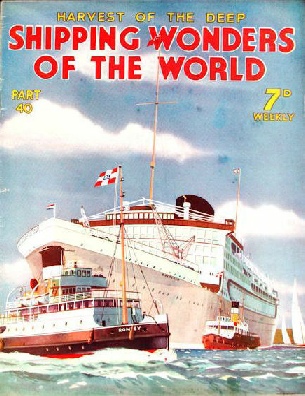
Contents of Part 40
Battle of the Nile
Concluding part (from issue 39) of this chapter.
The article is the fourth in the series on Decisive Naval Actions.
Deep Sea Fishing
The sailing fishing fleets of fifty years ago have disappeared, but the British fishermen still carry on the traditions of their predecessors, though in conditions less exacting. There are four modern methods of deep-sea fishing - trawling, drifting, seining and lining - and these are described in this chapter. The article also traces the development of the fishing boats from early primitive vessels to those of the present day.
The Shipbreaking Industry
In the days of the “wooden walls”, a ship condemned to destruction was often burned or even carefully “lost” in some convenient spot. The subject of shipbreaking is tinged with sadness. The thought of a fine ship, known to and loved by many who have travelled in her, being sold to the breakers to be dismantled and scrapped has something of tragedy in it. But no ship can last for ever, and it is perhaps preferable that she should be broken up at home than “sold foreign”.
The Shipbreaking Industry
(photogravure supplement)
The Shipbreaking Industry: Photogravure Supplement
ON THE FIRTH OF FORTH. Shipbreaking at Bo’ness, West Lothian. The American liner Columbia (right), almost completely stripped of her fittings, is awaiting her turn to be broken up while men are dealing with the San Sylvestre (left). The Columbia, formerly the Belgenland, was built in Belfast in 1917. She had a gross tonnage of 27,132, and her main dimensions were: length 870 ft 5 in, beam
78 ft 5 in and depth 44 ft 8 in.
The San Sylvestre, of the Eagle Oil and Shipping Co Ltd, was built at Newcastle-on-Tyne in 1913. She had a length of 420 ft 6 in, a beam of 54 ft 7 in and a depth of 32 ft 5 in. Her gross tonnage was 6,233.
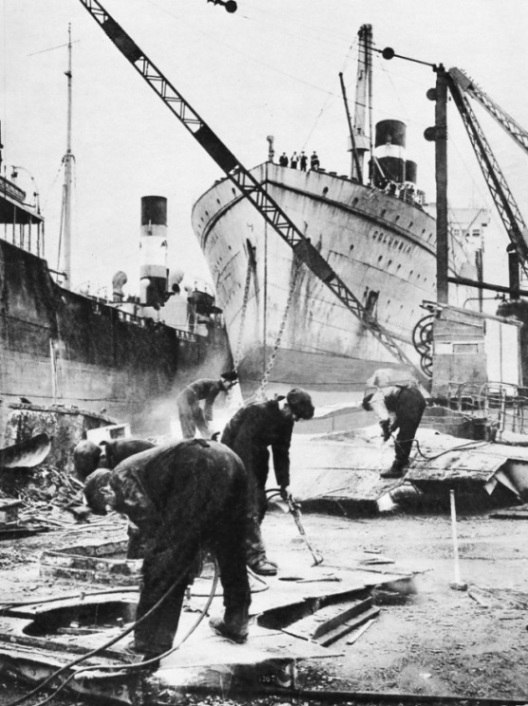
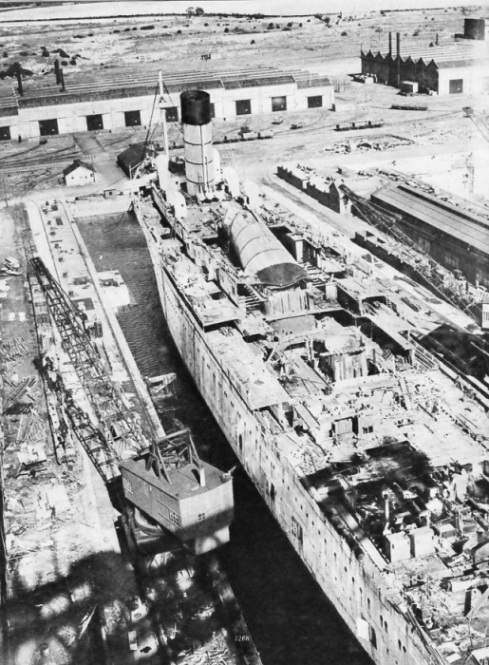
The Shipbreaking Industry - 2
ONCE QUEEN OF THE ATLANTIC. The famous Mauretania, of the Cunard White Star Line, in the dock at Rosyth, on the Firth of Forth. Only one of her four funnels remains in position. Another, just removed, is lying on the deck. The Mauretania, and her sister ship, the Lusitania (torpedoed and sunk in 1915) were built for the Cunard Line in 1907. In that year the Lusitania took the Blue Riband of the Atlantic from Germany with an eastward average of 23.61 and a westward average of 24.25 knots. In 1909 the Mauretania logged an eastward record at 25.89 and a westward record at 26.06 knots. This record stood for twenty years. The Mauretania, built at Newcastle-on-Tyne, had a gross tonnage of 30,696. Her length was 762 ft 2 in, her beam 88 feet and her depth 57 ft 1 in.
